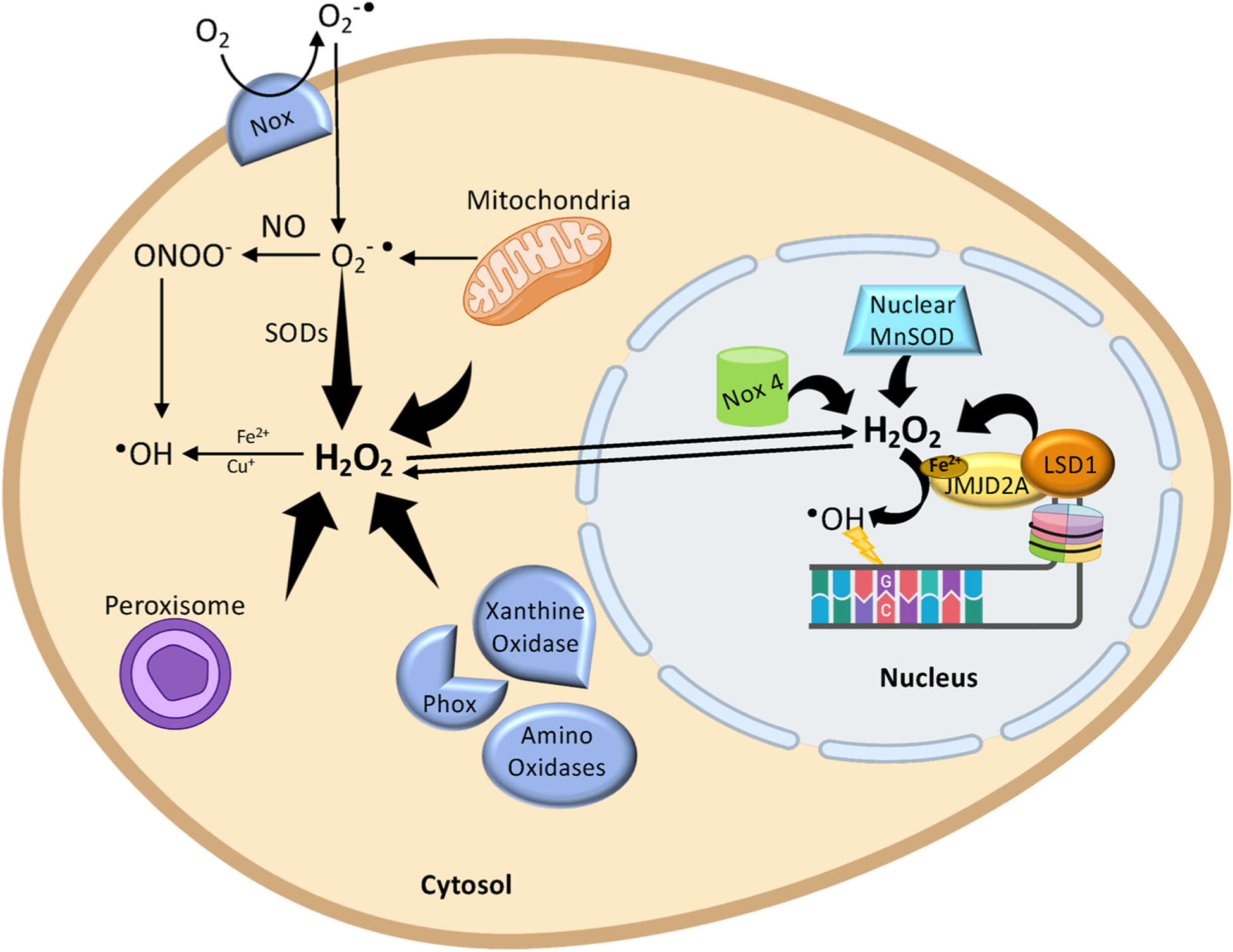Fig. 2.

The formation of reactive oxygen species (ROS) in the cell. First, the transmembrane NADPH oxidases (NOX) and mitochondria generate superoxide anion (O2) which diffuses in the cytoplasm. Then, O2can be converted to peroxynitrite (ONOO-) in the presence of NO or can be converted to H2O2 by superoxide dismutase (SOD). The cytosolic H2O2 may also be generated from different oxidases (Amino oxidases, Phox and Xanthine oxidase) or from peroxisome or from mitochondria. Next, H2O2 can be partially reduced to •OH, through the metal-catalysed Haber-Weiss reaction in the presence of reduced transition metals [e.g. Fe2+ (Fenton reaction) and Cu+]. •OH molecules are also formed from the ONOO-. The H2O2 may diffuse from the cytosol to the nucleus or can be produced directly into the nucleus by LSD1 demethylation reaction or by other nuclear oxidases. Finally, through the Fenton reaction, the H2O2 is converted into OH•, which in turn oxidizes 2′-deoxyguanosine (created with biorender.com).
